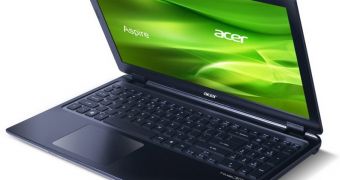Intel may have just set in place a rule that will make it impractical for laptop designers to make ultrabooks without touch panels, as they won't be saving much, if any, money by forgoing that feature.
Microsoft's Windows 8 operating system has a user interface specifically designed for touch support, so touch panels have been cropping up on monitors and laptops a lot more lately.
Intel has reportedly now decided that it wants touch panels on all ultrabooks made with next-generation Haswell central processing units.
The company won't refuse the orders of OEMs that want touch-less models. It will refuse to provide CPU subsidies though.
This essentially turns a potential cost-saving measure into a trade-off: the money that would otherwise be sheared off the price of the ultrabook has to go to paying for the CPU instead.
Intel hasn't officially commended on the processor subsidies, but it did say that touch would be necessary for next-gen ultrabooks.
Some are concerned that the company wants to force things a bit too much and too fast though.
Touch panels aren't exactly abundant (low yields are never fun), leading to higher price premiums for their use.
At the rate things are going, only 10-15% of all notebooks shipped by the end of the first half of 2013 will be touch-capable.
Intel's subsidies might help, but touch panels could be high enough that, even with the subsidies, consumers might think the ultrathin laptops cost too much.
After all, ultrabooks have been selling for over $1,000 / 1,000 Euro for two years now. Some models have neared the $700-750 / 700-750 Euro sweet spot, but this forceful inclusion of touch might interfere with the plan to turn that price point into the standard tag this year.
It bears noting that analysts, consumers and companies alike have been lobbying for that price since early 2012.

 14 DAY TRIAL //
14 DAY TRIAL //